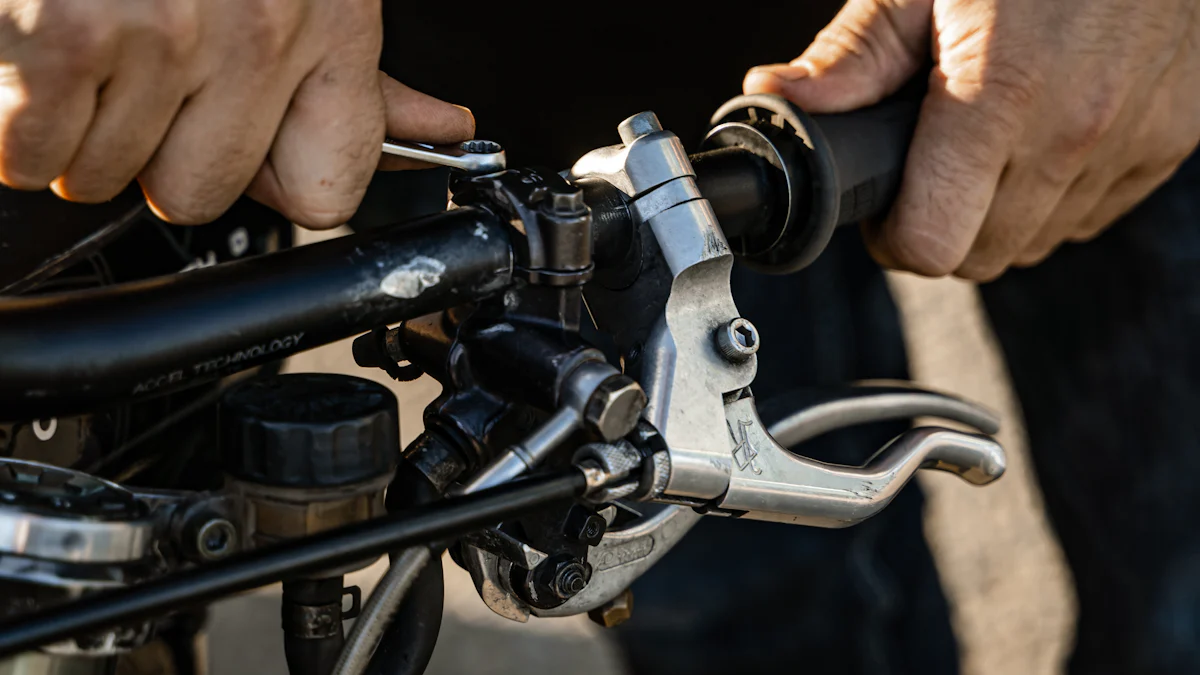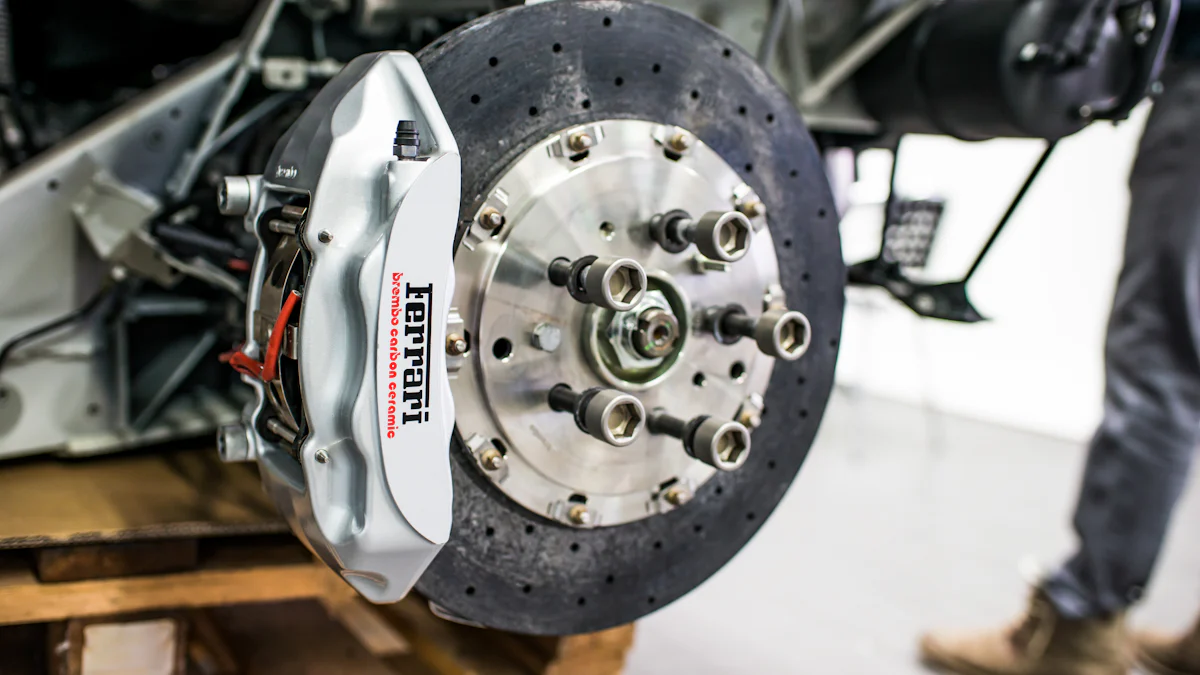A Haldex automatic slack adjuster keeps your vehicle’s brakes properly aligned by automatically adjusting brake slack. It ensures consistent braking performance and reduces manual maintenance. Installing one involves removing the old adjuster, attaching the new unit, and testing it for proper function. Follow each step carefully to ensure safety and optimal performance.
Key Takeaways
- Collect all tools and materials before you start. Being ready saves time and makes the job easier.
- Stay safe by wearing safety gear (PPE) and making sure the vehicle cannot move before working.
- Take care of the slack adjuster by adding grease to its parts and checking for damage. This keeps it working well for a long time.
Tools and Materials for Installing an Automatic Slack Adjuster

Before you begin installing an automatic slack adjuster, gather the right tools and materials. Having everything ready will save time and ensure a smoother process.
Required Tools
You’ll need a few essential tools to complete the installation. These include:
- A socket wrench set for loosening and tightening bolts.
- A torque wrench to ensure proper torque settings.
- A flathead screwdriver for prying off components.
- A hammer or mallet for removing stubborn parts.
Each tool plays a critical role in safely and efficiently installing the adjuster.
Necessary Materials and Replacement Parts
In addition to tools, you’ll need specific materials and parts. Make sure you have:
- A new Haldex automatic slack adjuster that matches your vehicle’s specifications.
- Replacement clevis pins and cotter pins to secure the adjuster.
- High-quality grease for lubricating moving parts.
Check your vehicle’s service manual to confirm compatibility and avoid installation issues.
Optional Tools for Troubleshooting
Sometimes, unexpected challenges arise during installation. Optional tools can help you troubleshoot effectively:
- A brake adjustment gauge to verify proper alignment.
- A flashlight or work light for better visibility in tight spaces.
- A pry bar for removing particularly stubborn components.
These tools aren’t always necessary but can make the process easier if you encounter difficulties.
Pro Tip: Organize your tools and materials before starting. This preparation will help you focus on the installation without unnecessary interruptions.
Safety Precautions for Installing an Automatic Slack Adjuster
Preparing the Vehicle
Before starting, park your vehicle on a flat, stable surface. Engage the parking brake to prevent movement. Use wheel chocks to secure the tires and eliminate any risk of rolling. If you’re working on a commercial vehicle, ensure the air system is fully drained to avoid accidental brake activation. Always refer to your vehicle’s service manual for specific preparation steps.
Tip: Double-check that the vehicle is completely immobilized before proceeding. This step is crucial for your safety.
Using Personal Protective Equipment (PPE)
Wearing the right protective gear minimizes the risk of injury. Equip yourself with safety gloves to protect your hands from sharp edges and grease. Use safety glasses to shield your eyes from debris or accidental splashes of lubricant. If you’re working in a noisy environment, consider wearing ear protection. Steel-toed boots can also provide extra safety when working around heavy components.
Alert: Never skip PPE. Even a small oversight can lead to serious injuries.
Key Safety Guidelines
Follow these essential safety practices throughout the installation process:
- Avoid placing your hands near moving parts, especially when testing the brakes.
- Use tools as intended to prevent accidents or damage.
- Keep your workspace organized to reduce tripping hazards.
- If you’re unsure about any step, consult a professional or refer to the service manual.
Staying vigilant and adhering to these guidelines ensures a safer and smoother installation of the automatic slack adjuster.
Reminder: Safety should always be your top priority. Rushing through the process can lead to mistakes or injuries.
Step-by-Step Guide to Installing a Haldex Automatic Slack Adjuster

Preparing for Installation
Start by ensuring all tools and materials are within reach. Confirm that the new automatic slack adjuster matches your vehicle’s specifications. Clean the work area around the brake assembly to remove dirt and grease. This step prevents contamination during installation. Inspect the brake components for wear or damage. Replace any faulty parts before proceeding.
Tip: Take photos of the old slack adjuster setup before removal. These images can serve as a reference during installation.
Removing the Old Slack Adjuster
Locate the old slack adjuster on the brake assembly. Use a socket wrench to loosen and remove the clevis pins securing it. If the pins are stuck, apply penetrating oil and use a hammer to gently tap them loose. Once the pins are removed, slide the old slack adjuster off the camshaft. Inspect the camshaft splines for damage and clean them thoroughly.
Alert: Avoid forcing the old adjuster off. Excessive force can damage the camshaft or surrounding components.
Installing the New Automatic Slack Adjuster
Align the new automatic slack adjuster with the camshaft splines. Slide it into place, ensuring a snug fit. Attach the clevis to the brake rod and secure it with new clevis pins. Tighten the pins using a torque wrench to the manufacturer’s recommended settings. Apply grease to the adjuster’s moving parts to ensure smooth operation.
Pro Tip: Rotate the adjuster slightly after installation to confirm proper engagement with the camshaft.
Adjusting and Testing the Slack Adjuster
Manually adjust the slack adjuster to remove excess brake slack. Use a brake adjustment gauge to verify the correct clearance between the brake shoes and drum. Reconnect the air system and test the brakes by applying and releasing them several times. Observe the adjuster’s movement to ensure it functions automatically. If the brakes feel uneven or unresponsive, recheck the installation.
Reminder: Always test the brakes in a controlled environment before driving the vehicle.
Troubleshooting and Maintenance Tips
Common Installation Problems and Solutions
You might encounter a few challenges during installation. One common issue is difficulty fitting the automatic slack adjuster onto the camshaft. This often happens if the camshaft splines are dirty or damaged. Clean the splines thoroughly with a wire brush and inspect them for wear before trying again.
Another problem involves improper torque on the clevis pins. If the pins are too loose, the adjuster may not function correctly. Use a torque wrench to tighten them to the manufacturer’s specifications.
If the adjuster doesn’t move smoothly after installation, check for misalignment or insufficient lubrication. Apply high-quality grease to the moving parts and ensure all components are properly aligned.
Tip: Keep the service manual handy. It provides detailed troubleshooting steps for specific issues.
Ensuring Proper Alignment
Proper alignment is critical for the automatic slack adjuster to work effectively. Start by verifying that the adjuster is seated correctly on the camshaft splines. Misalignment can cause uneven brake wear or poor braking performance.
Next, check the angle of the brake rod. It should form a straight line with the adjuster when the brakes are applied. Adjust the clevis as needed to achieve this alignment. Use a brake adjustment gauge to confirm the correct clearance between the brake shoes and drum.
Reminder: Misalignment can lead to premature wear and reduced braking efficiency. Take your time to get it right.
Maintenance Tips for Long-Term Performance
Regular maintenance keeps your automatic slack adjuster in top condition. Inspect it during routine brake checks. Look for signs of wear, such as damaged clevis pins or excessive play in the adjuster. Replace worn parts immediately to avoid further issues.
Lubricate the adjuster’s moving parts with grease at recommended intervals. This prevents rust and ensures smooth operation. Also, test the adjuster periodically by applying and releasing the brakes. Watch for consistent movement to confirm it’s functioning automatically.
Pro Tip: Keep a maintenance log. Tracking inspections and lubrication schedules helps you stay on top of upkeep.
Installing a Haldex automatic slack adjuster involves preparation, removal, installation, and testing. Follow each step carefully to ensure proper brake function. Prioritize safety by using the right tools and protective gear. Always verify adjustments for optimal performance. If you face challenges, consult your service manual or reach out to a professional for assistance.
FAQ
What is the purpose of a Haldex automatic slack adjuster?
A Haldex automatic slack adjuster keeps your brakes properly aligned by automatically adjusting brake slack. This ensures consistent braking performance and reduces the need for manual adjustments.
Tip: Regularly inspect the adjuster to maintain optimal brake performance.
How do I know if my slack adjuster is installed correctly?
Test the brakes after installation. The adjuster should move automatically when you apply and release the brakes. Misalignment or uneven braking indicates improper installation.
Alert: Recheck alignment and torque settings if the adjuster doesn’t function as expected.
How often should I lubricate the automatic slack adjuster?
Lubricate the adjuster during routine brake maintenance or as recommended in your vehicle’s service manual. Proper lubrication prevents rust and ensures smooth operation.
Pro Tip: Use high-quality grease for better long-term performance.
Post time: Jan-16-2025





